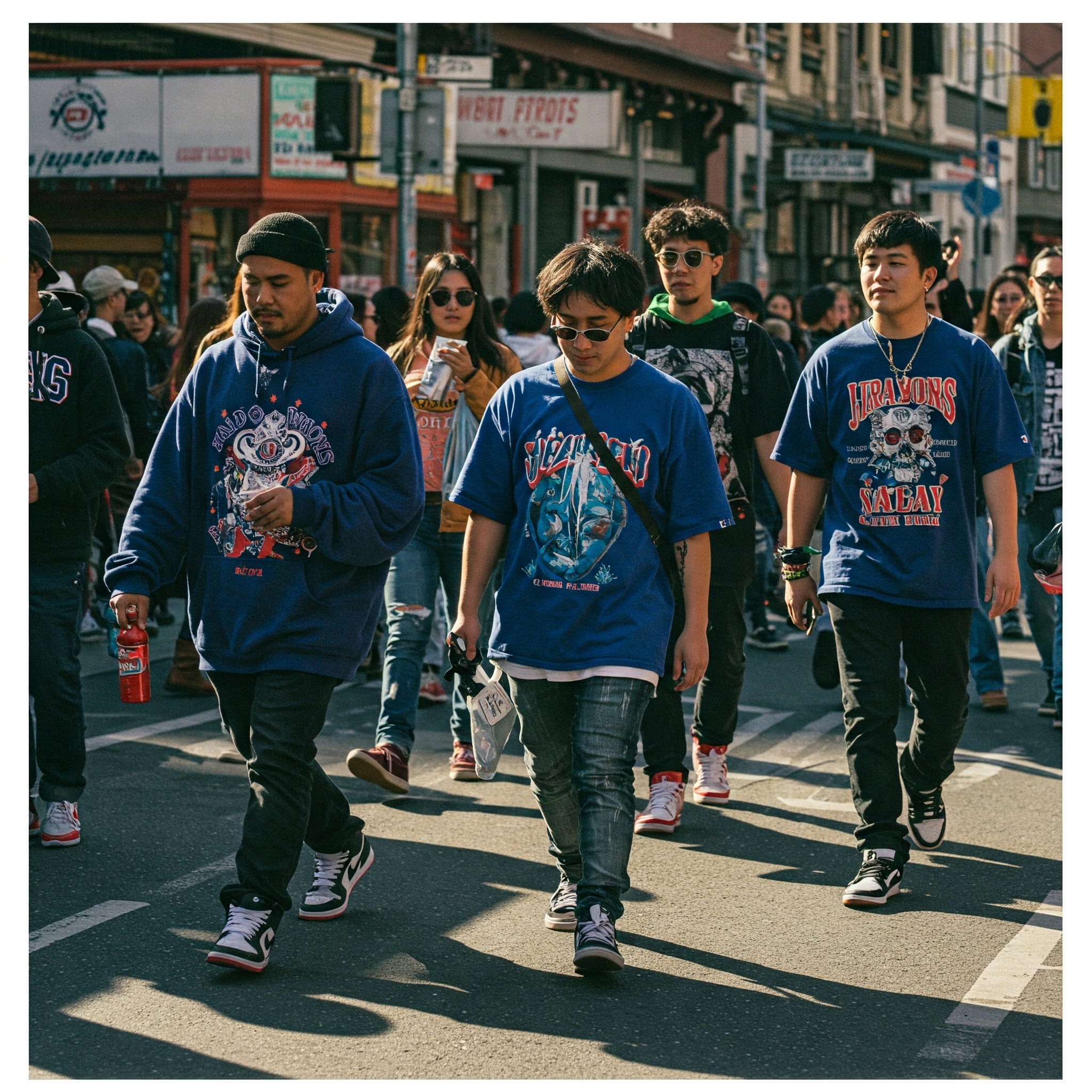No products in the cart.: $0.00
The Revolutionary Rise of Streetwear: From Subculture to Global Phenomenon

Streetwear, once relegated to the fringes of skateboarding culture and hip-hop scenes, has exploded into a global phenomenon, profoundly impacting the high fashion landscape and shaping the way people dress worldwide. Its rise is a testament to the power of subcultures to influence mainstream aesthetics and the increasing democratization of fashion in the digital age.
The origins of streetwear can be traced back to the late 20th century, emerging from the confluence of several distinct subcultures. The Californian surf and skate scene of the 1970s laid the groundwork with its emphasis on comfortable, functional clothing that allowed for freedom of movement. Brands like Vans and Stüssy, born from this culture, became early pioneers of what would later be recognized as streetwear.
Simultaneously, the burgeoning hip-hop culture in New York City also played a pivotal role in shaping the streetwear aesthetic. Artists and their fans embraced athletic wear, oversized silhouettes, and bold graphics as a form of self-expression and cultural identity. Brands like Adidas and Puma, already established in the sportswear realm, found new relevance within this dynamic subculture.
The 1980s and 1990s witnessed the further solidification of streetwear as a distinct style. The rise of sneaker culture, fueled by iconic basketball shoes and limited-edition releases, created a fervent collector’s market and cemented footwear as a central element of the streetwear look. The influence of Japanese designers like Hiroshi Fujiwara, who blended Western streetwear with Japanese aesthetics, also contributed to the evolving landscape.
The internet and social media have acted as powerful catalysts in the globalization of streetwear. Platforms like Instagram have provided a stage for individuals to showcase their unique styles and connect with like-minded communities across the globe. This digital ecosystem has accelerated the spread of trends and fostered a sense of inclusivity within the streetwear movement.
High fashion’s embrace of streetwear in recent years has further propelled its mainstream appeal. Luxury brands have collaborated with streetwear icons and incorporated elements like hoodies, sneakers, and bold logos into their collections. This blurring of lines between high fashion and streetwear has challenged traditional notions of luxury and democratized access to fashion trends.
The core tenets of streetwear often revolve around comfort, individuality, and a sense of authenticity. Oversized silhouettes, graphic tees, hoodies, and sneakers remain key staples. However, the definition of streetwear continues to evolve, incorporating elements from various subcultures and reflecting the diverse influences of the global community. Sustainability and inclusivity are also increasingly important considerations within the streetwear movement.
The impact of streetwear extends beyond mere clothing. It represents a cultural shift that values self-expression, community, and the breaking down of traditional fashion hierarchies. It has empowered individuals to define their own style and has given rise to a new generation of designers and entrepreneurs who are shaping the future of fashion.
In conclusion, the revolutionary rise of streetwear from its subcultural roots to a global phenomenon is a compelling story of cultural influence and the democratization of fashion. Fueled by music, sports, and the power of the internet, streetwear has not only redefined how people dress but has also challenged the very notion of what constitutes high fashion. Its continued evolution promises to keep the fashion world dynamic and constantly in flux.



